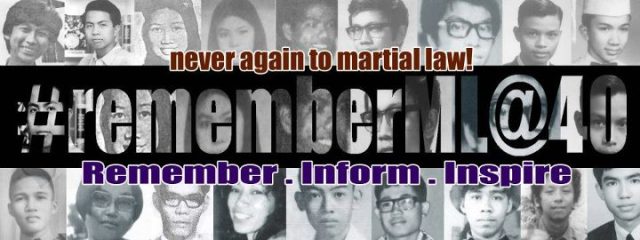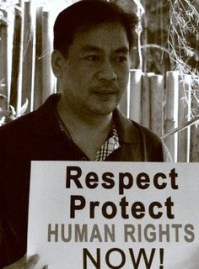On September 21, the world commemorates the “International Day of Peace”. All nations, governments, private and non-governmental organizations and individuals are enjoined to observe secession of hostilities through activities celebrating the ideals of peace. This event coincides with the anniversary of the dark period of Philippines history when the Dictatorship regime of President Ferdinand Marcos declared Martial Law in 1972. The country fell to “silence”. Peace was fear.
Today, the UN calls for “sustainable peace for sustainable future”, highlighting the use and abuse of land and natural resources in instigating conflict situations around the world. It calls all its member-states to initiate “ceasefires” and let up to the wanton destruction of environment and the bloody massacre of people defending ancestral domains. The call falls into silence. Peace is a dream.
Weeks ago, a Subanen Tribal leader in the Philippines, Timuay Locenio Magda was ambushed killing his 11-year old son Jason by unknown assailants in the Bayog, Zamboanga del Sur. The incident is alleged to have instigated over dispute on ancestral domain claim with several mining companies on the sacred Pinukis Range Forest – a watershed for 3 major rice-growing regions in Zamboanga Peninsula. His is the 36th case documented in the area alone under the present administration.
For 6 years now, villagers of Gangjeong, South Korea are protesting the construction of a naval base in Jeju Island, declared the Island of Peace by the same government. Peaceful protests are continually met with force and violence.
In Cambodia, the government’s abuse of law and misuse of the courts has led to the displacement of the Boeung Kak and Borie Keila communities in Phnom Penh. Such practice is extended to persecute activists and human rights defenders like Yorm Bopha and Tim Sakmony, who were arrested on September 4 and 5, respectively, on dubious charges.
Early September in Myanmar, Wai Lu was arrested for helping farmers win back their land from a copper mining company in Latpadaung mountain range allegedly under the country’s Religious Offenses Act.
Attacks against communities underscore the connection of peace, human rights and the aggressive promotion of “progress” that misplaces people in the development process. As conditions of people worsen, governments create further magical illusion covering up their violations and obligations. They speak of peace and draw a future far from the aspiration of people struggling to survive and live with dignity. Peace is corrupted by political and economic individualism and greed. Yet, it remains a symbol of resistance and a source of courage for the afflicted.
Peace and sustainable future describes the legitimacy of the continuing struggle of indigenous peoples, communities and environment activists in protecting ancestral land, their life, culture and future against corporations and armed groups. Peace provides the assertion of communities and peoples as the center of development. It debunks the idea of peace as a mere construct. It asserts that peace is an action fueled by inspirations and sacrifices of peoples and nations searching for a sustainable future.
As the 31st International Day of Peace is celebrated, peoples in various parts of the globe continue to clamor for it, act on it and die for it. In the same manner, Filipinos are to remember Martial law on its 40th year (Remember ML@40), the world must recall that indeed, tyrants can be overthrown, people have the power, and peace is a possibility. As the dark days linger on with peace remaining elusive and a future bleak, everybody needs to consolidate the lessons of history, muster the courage to block its horrors and lay down a solid foundation for peace mindful of the universal dignity of all and for all.
Related articles
- About International Day of Peace, September 21 (holyfamilysisters.org)
- It’s time to PEACE together the world (unicef.org.au)
- Secretary-General’s Message for 100-Day Countdown to International Day of Peace 2012 (peacewick.wordpress.com)
- International Day of Peace – 21 September 2012 (datadiary2012.wordpress.com)



